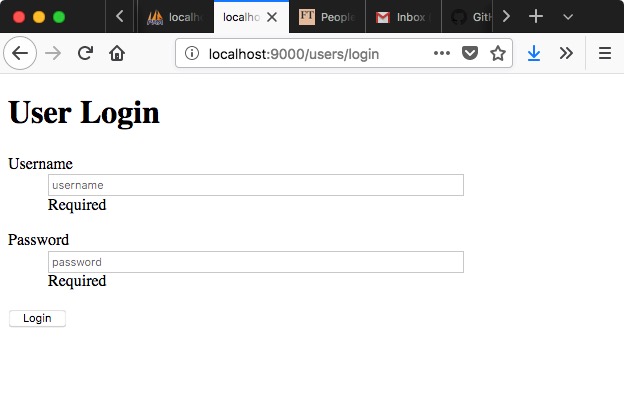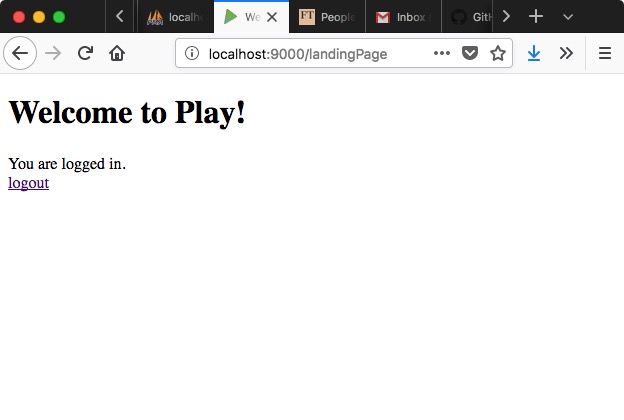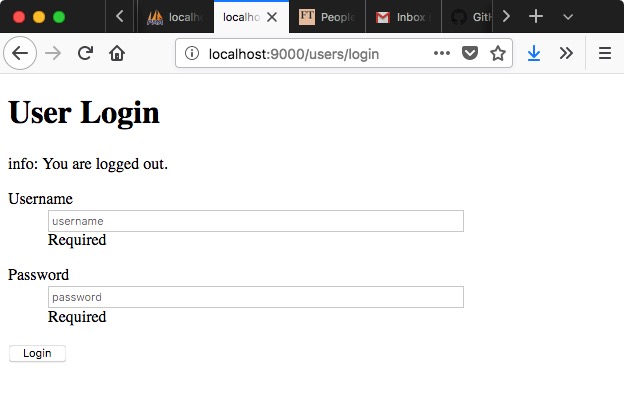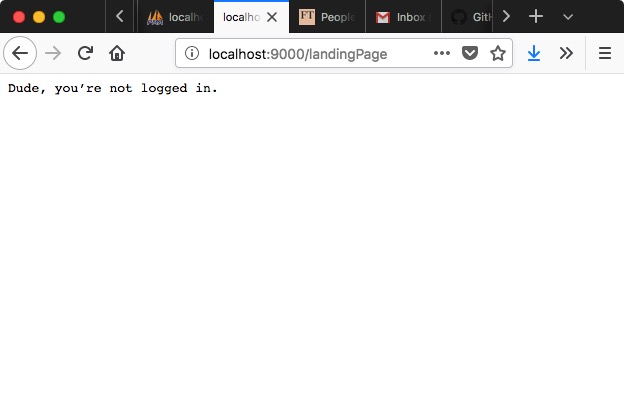Without an example it can be hard to understand how user authentication works in a Play Framework application, so I just created a project on Github named PlayFrameworkLoginAuthenticationExample that demonstrates one way to implement login authentication in a Play Framework 2.6 application.
I can write more about it if people are interested, but the highlights go like this:
- If you have a current version of SBT installed, you can download the project and immediately run it with the
sbt runcommand - I removed all the database-access code from the project, so you can immediately access the http://localhost:9000/users/login URL
- When you access that URL the routes file sends control to the
showLoginFormmethod in theUserControllerclass; it displays the userLogin.scala.html template - You can see in the
UserDaothat the username and password are bothfoo - When you attempt to login, the routes file sends the user form data to the
processLoginAttemptin theUserControllerclass - If the login attempt succeeds, control is sent to the
showLandingPageaction in theLandingPageControllerclass; it shows the loginLandingPage.scala.html template, which includes a “logout” link; it also shows a Flash message that the login succeeded - User authentication is implemented in the
AuthenticatedUserActionclass - To make sure that an action can only be accessed by an authenticated user, the method should use an instance of
AuthenticatedUserAction, as shown by theshowLandingPagemethod in theLandingPageControllercontroller:
def showLandingPage() = authenticatedUserAction { implicit request: Request[AnyContent] =>
Ok(views.html.loginLandingPage(logoutUrl))
}
What it looks like
Here’s what this little starter application looks like. First, the login page:

Next, the simple landing page with the Flash message:

Next, what you see when you log out:

And finally, what you see if you attempt to access the landing page when you’re not logged in:

Admittedly not too exciting, but it shows the authentication basics.
Summary
If you wanted to see an example of a Play Framework 2.6 login/authentication application, I hope this project is helpful. I think it follows the Play Action Composition docs pretty faithfully. If people have questions about the project I’ll be glad to write more here, but I hope this is helpful as is.
P.S. — If you’re writing a Play Framework server application with a JavaScript client front-end you’ll have to do things a little differently, but hopefully this example can help a little bit in that use case as well.



